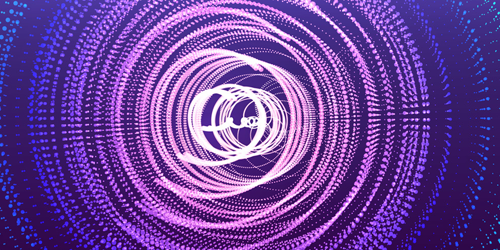A Twist on Particle Collisions
Light with orbital angular momentum has a wave front that spirals around a central axis. Single photons and other particles can also exhibit this twisting effect in their quantum wave packets. A new study looks at what could happen if beams of twisted particles were smashed together in a collider experiment. The team behind the study shows that if the energies of twisted particles can be significantly increased, their collisions could probe aspects of spin physics that complement current studies that use spin-polarized beams.
For years now, physicists have been using single beams of twisted photons or twisted electrons to, among other things, manipulate nanoparticles or image magnetic materials (see Focus: Big Twist for Electron Beam). Aiming two twisted beams at each other has not yet been tried experimentally, but several theorists have already begun considering what might be revealed in twisted-particle collisions.
Now, Igor Ivanov from the Instituto Superior Técnico in Portugal and his colleagues have identified a new aspect of twisted-particle collisions that hadn’t been realized before. They started with a description of a twisted beam as a combination of spatially varying spin currents. They then showed that the interactions of these spin currents in a collision could reveal new information about spin physics, such as the spin structure of protons (see Viewpoint: Spinning Gluons in the Proton). These proposed experiments would require twisted particles with GeV energies, which is far above the current maximum energy of 300 keV achieved for twisted electrons. The researchers hope that the prospect of studying particles in a new way will motivate experimentalists to work on boosting twisted-particle energies.
This research is published in Physical Review Letters.
–Michael Schirber
Michael Schirber is a Corresponding Editor for Physics based in Lyon, France.




